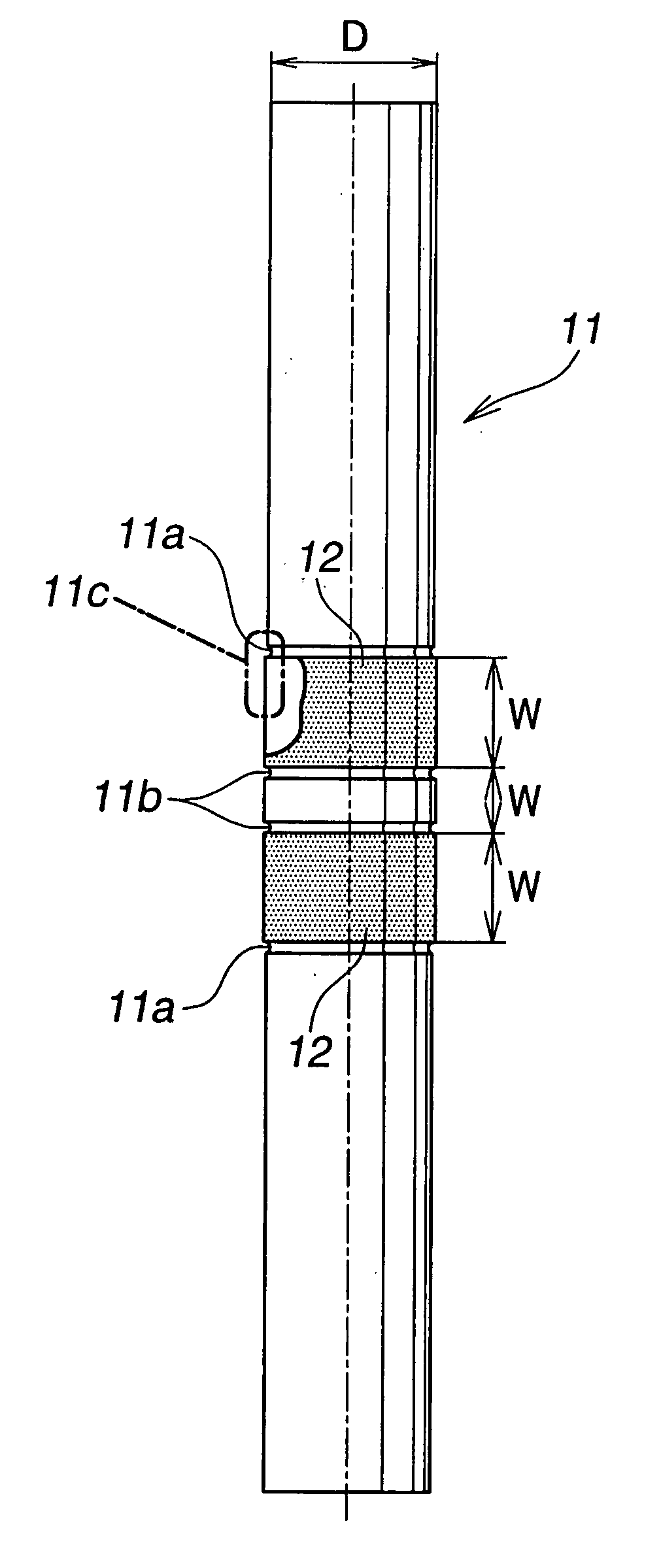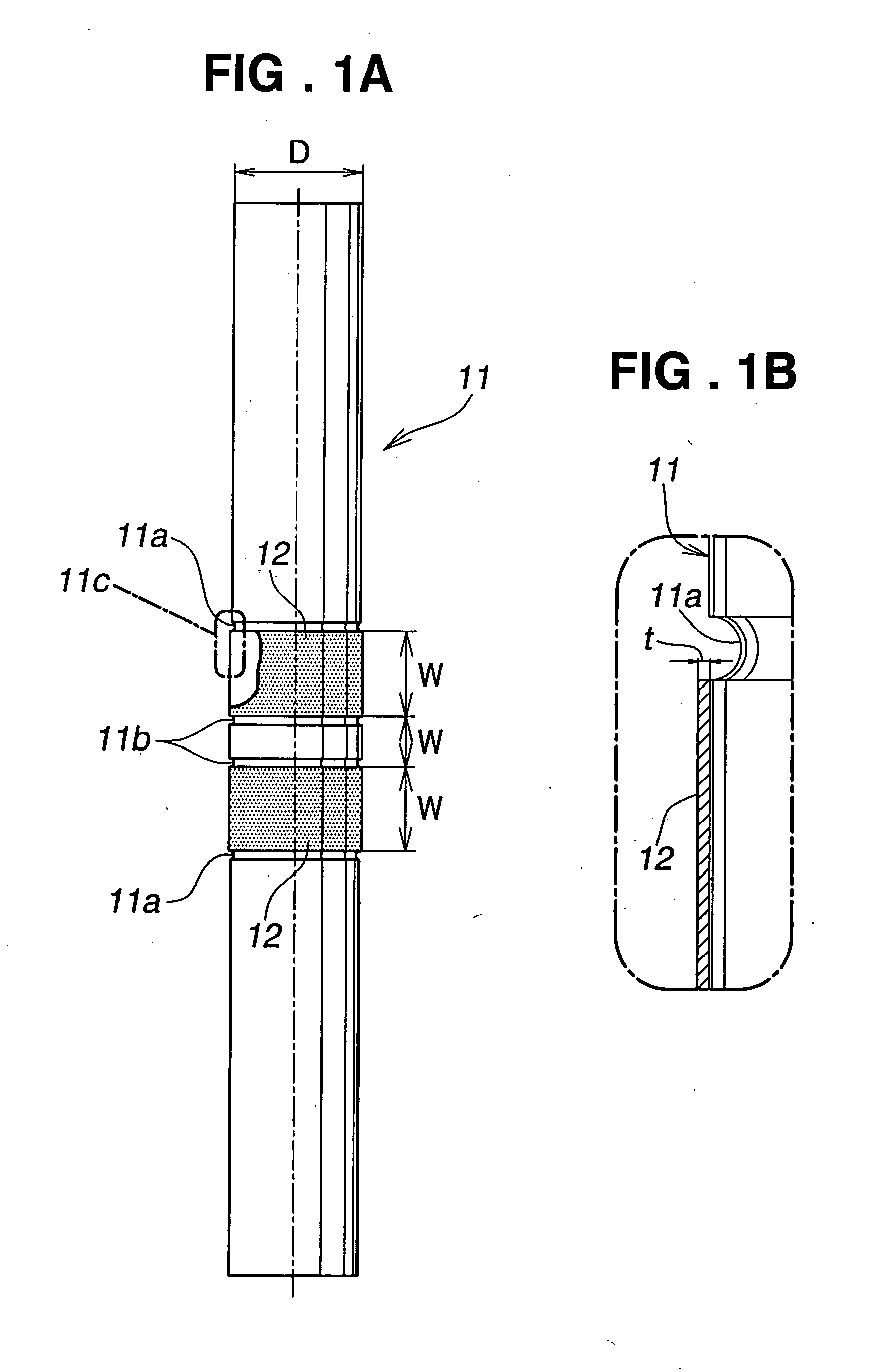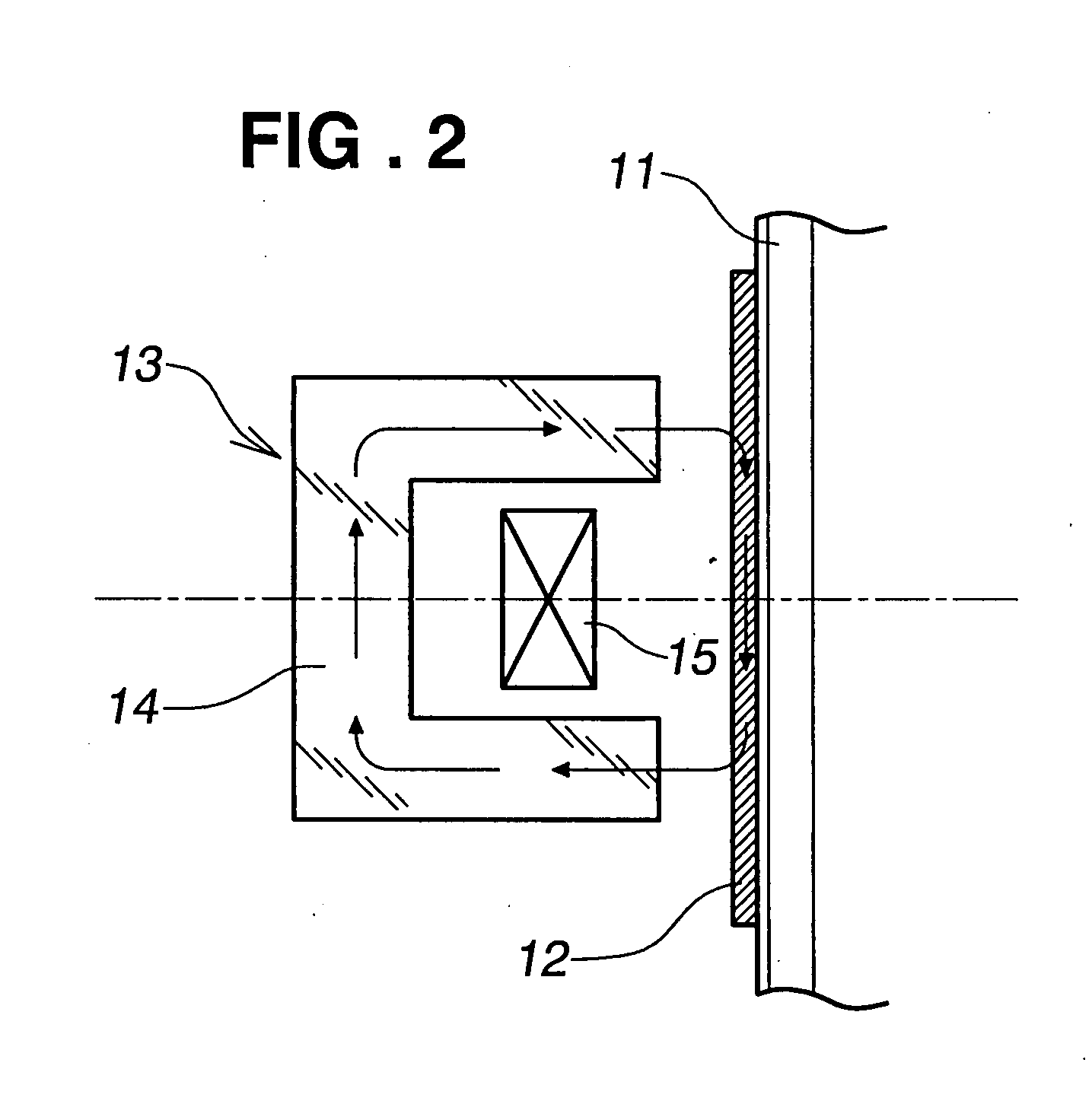Magnetostrictive coat forming method, magnetostrictive torque sensor manufacturing method, and electric power steering apparatus employing the sensor
a magnetostrictive torque and sensor technology, applied in the direction of magnets, magnet bodies, instruments, etc., can solve the problems of unavoidably deteriorating detection accuracy, long heating time of steering shafts, and large hysteria, so as to stable torque detection, and avoid undesired fluctuation in detected steering torque output
- Summary
- Abstract
- Description
- Claims
- Application Information
AI Technical Summary
Benefits of technology
Problems solved by technology
Method used
Image
Examples
first embodiment
[0089] First, a description will be given about a magnetostrictive-coat forming method in accordance with the present invention.
[0090]FIG. 1A is a view illustrating a steering shaft having magnetostrictive coats formed thereon, and FIG. 1B is an enlarged view of a section depicted by reference character 11C in FIG. 1B. As seen in FIGS. 1A and 1B, two annular magnetostrictive coats 12, for example, in the form of Ni—Fe plating, are formed, at a predetermined interval, on the outer circumferential surface of the steering shaft 11 of an electric power steering apparatus. Annular grooves 11a or 11b are formed in and along the outer circumferential surface of the shaft 11 near axial opposite ends of each of the two magnetostrictive coats 12. In the illustrated example, the steering shaft 11 has a diameter D of 20 mm, each of the magnetostrictive coats 12 has a width (axial dimension) of 14 mm, the interval w between the magnetostrictive coats 12 is 8 mm, and a target thickness of each of...
second embodiment
[0111] Next, a description will be given about the magnetostrictive torque sensor manufactured by the method of the present invention and the electric power steering apparatus equipped with such a magnetostrictive torque sensor, as the present invention.
[0112]FIG. 14 is a view, similar to FIG. 40, which shows the magnetostrictive torque sensor manufactured by the method of the present invention and the electric power steering apparatus equipped with the magnetostrictive torque sensor. The electric power steering apparatus 30 shown in FIG. 14 is generally similar to the electric power steering apparatus 100 of FIG. 40 except for the manufacturing method of the magnetostrictive torque sensor 31, and thus the same components as those in FIG. 40 are represented by the same reference characters and will not be described here to avoid unnecessary duplication.
[0113] In the illustrated example of FIG. 14, the steering shaft (rotational shaft) 109b, connected to the steering wheel 101, is r...
third embodiment
[0142]FIG. 30 is a view, similar to FIG. 40, which shows the magnetostrictive torque sensor manufactured by the manufacturing method of the present invention and the electric power steering apparatus equipped with the magnetostrictive torque sensor. The electric power steering apparatus 40 shown in FIG. 30 is generally similar to the electric power steering apparatus 100 of FIG. 40 except for the manufacturing method of the magnetostrictive torque sensor 41, and thus the same components as those in FIG. 40 are represented by the same reference characters and will not be described here to avoid unnecessary duplication.
[0143] The steering torque detector section 41 employed in the electric power steering apparatus 40 includes the magnetostrictive torque sensor having magnetostrictive coats which are provided on upper and lower portions (42 and 43) of the outer circumferential surface of the steering shaft (rotational shaft) 109b by plating the upper end lower portions, for example, wi...
PUM
| Property | Measurement | Unit |
|---|---|---|
| temperature | aaaaa | aaaaa |
| thickness | aaaaa | aaaaa |
| temperature | aaaaa | aaaaa |
Abstract
Description
Claims
Application Information
 Login to View More
Login to View More - R&D
- Intellectual Property
- Life Sciences
- Materials
- Tech Scout
- Unparalleled Data Quality
- Higher Quality Content
- 60% Fewer Hallucinations
Browse by: Latest US Patents, China's latest patents, Technical Efficacy Thesaurus, Application Domain, Technology Topic, Popular Technical Reports.
© 2025 PatSnap. All rights reserved.Legal|Privacy policy|Modern Slavery Act Transparency Statement|Sitemap|About US| Contact US: help@patsnap.com



